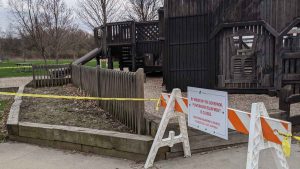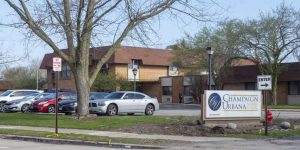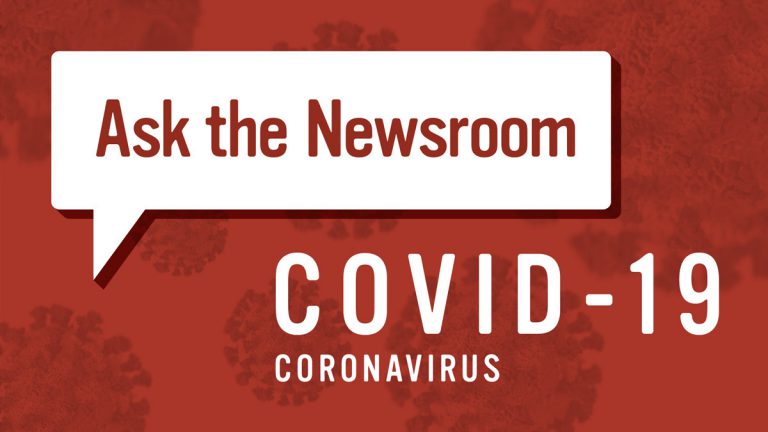The Illinois Newsroom team is answering questions from listeners to navigate this unprecedented time. Have a question you want answered? Ask here.
In today’s edition of “Ask the Newsroom,” we sought answers — regarding the state’s moving into Phase 4 of the Restore Illinois plan today — from Julie Pryde, administrator of the Champaign-Urbana Public Health District.
Please note, the information is accurate as of June 26, 2020.
Playgrounds Reopening
Q: When will playgrounds reopen in Illinois?
Phase 4 guidelines state that indoor playgrounds should remain closed, but outdoor recreation will be allowed, with some restrictions.

This includes outdoor playgrounds. Champaign and Urbana park district announced they will reopen playgrounds on Friday. In addition, basketball and volleyball courts will be reopened, as well as baseball, football and soccer fields.
But local health officials caution that having these spaces reopen does not mean the virus is gone and is no longer a threat.
“So it’s going to be incumbent upon parents to keep an eye on their children,” says C-U Public Health Administrator Julie Pryde.
Caretakers should encourage children to wash their hands before and after and stay away from crowds.
Asked if the expectation is for masks to be worn, assuming children will have difficulty maintaining six feet from others while playing, Pryde says: “Would we like that? Yes, of course because if they’re playing on the playground equipment and they’re getting around each other, you know, there will be a chance for infection.”
She says some playground equipment is large enough for kids to spread out, and she advises parents to look out for their children and help them stay far away from those not in their household.
If someone with a confirmed case of COVID-19 were found to have spent time at a playground while contagious, Pryde says the public would be notified so that anyone who may have been exposed can contact the local health department to receive instructions on testing, quarantine and monitoring symptoms.
Although it’s allowed under state guidance, officials in Chicago say the city’s 600 playgrounds will not be reopening for now, according to WBEZ, due to concerns about possible COVID-19 spread.
Nursing Home Visits
Q: How much longer are nursing homes going to be on lockdown?
The Illinois Department of Public Health issued guidance on June 18 for nursing homes to allow outdoor visitation.

Visitors must schedule an appointment and be pre-screened for COVID-19 symptoms by phone. Both residents and visitors will be screened upon the visitors’ arrival.
All visits must take place outdoors, with face coverings and a minimum of six feet between visitors and residents. Two visitors at a time are allowed per guest.
“I wish I had a better answer, but there is nothing that we know of that will allow that to be safe (during an in-person visit),” says C-U Public Health Administrator Julie Pryde. “People in nursing homes or long-term care facilities are already vulnerable… So the fewer people that go in there, the better.”
Pryde says she understands it’s disappointing that visits have to be held outdoors with social distancing. When does she expect further loosening of the guidelines? Pryde says: “The unfortunate answer is probably not until the pandemic is over.”
Weddings
Q: What are the restrictions for weddings during Phase 4?
Meetings and events—including conferences and indoor weddings—can return with either 50 people or fewer. For smaller rooms, only half of room capacity will be allowed. Facilities and venues are expected to put social distancing and capacity limits in place.
Outdoor weddings and events can have up to 100 people. State health officials told the Better Government Association that these requirements could change in the future based on new data and guidance.
COVID-19 Outbreaks
Q: What criteria are used by health departments to determine whether to inform the public of COVID-19 outbreaks?
As more places reopen, public health officials say more outbreaks are expected. When cases are confirmed, local public health departments are tasked with investigating who else may have been exposed, with a process known as contact tracing.
Champaign-Urbana Public Health Administrator Julie Pryde says the process involves instructing anyone who’s sick to isolate, and those who’ve been exposed to get tested and quarantine. Contact tracers follow up with each person daily until they’re released from isolation or quarantine.
When it comes to disclosing the locations of COVID-19 outbreaks, Pryde says her agency only does so when unable to otherwise inform those who’ve been exposed.
“We prefer to do the contact tracing the other way and not go out and blanket the public,” Pryde says. “But there are certain times that absolutely, we don’t have a choice but to do that.”
She says this is why Public Health does not reveal the names of restaurants where an employee tested positive and the only significant exposure was to fellow workers. Close contact is defined as spending more than 15 minutes at a distance of less than 6 feet from another person.
However, she says they will announce outbreaks that are linked to gatherings where social distancing wasn’t practiced, and where contact tracers are unable to know and reach out to all who were exposed and notify them to get tested.
Most recently, CU Public Health shared information about an “unofficial prom” event in Mahomet that took place in mid-June, in several people contracting COVID-19.
Pryde says they will also disclose any time outbreaks are linked to playgrounds or other public spaces.

